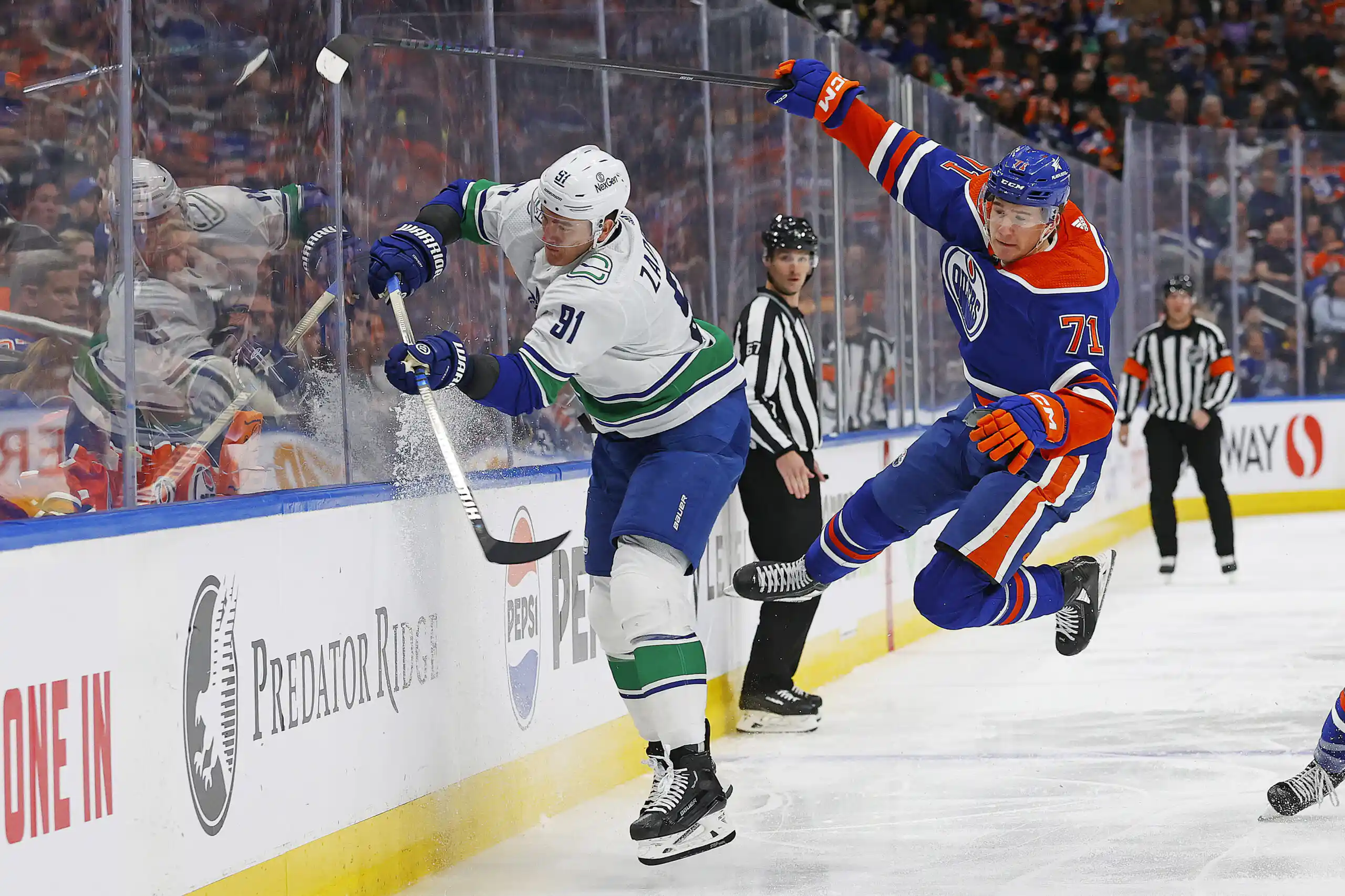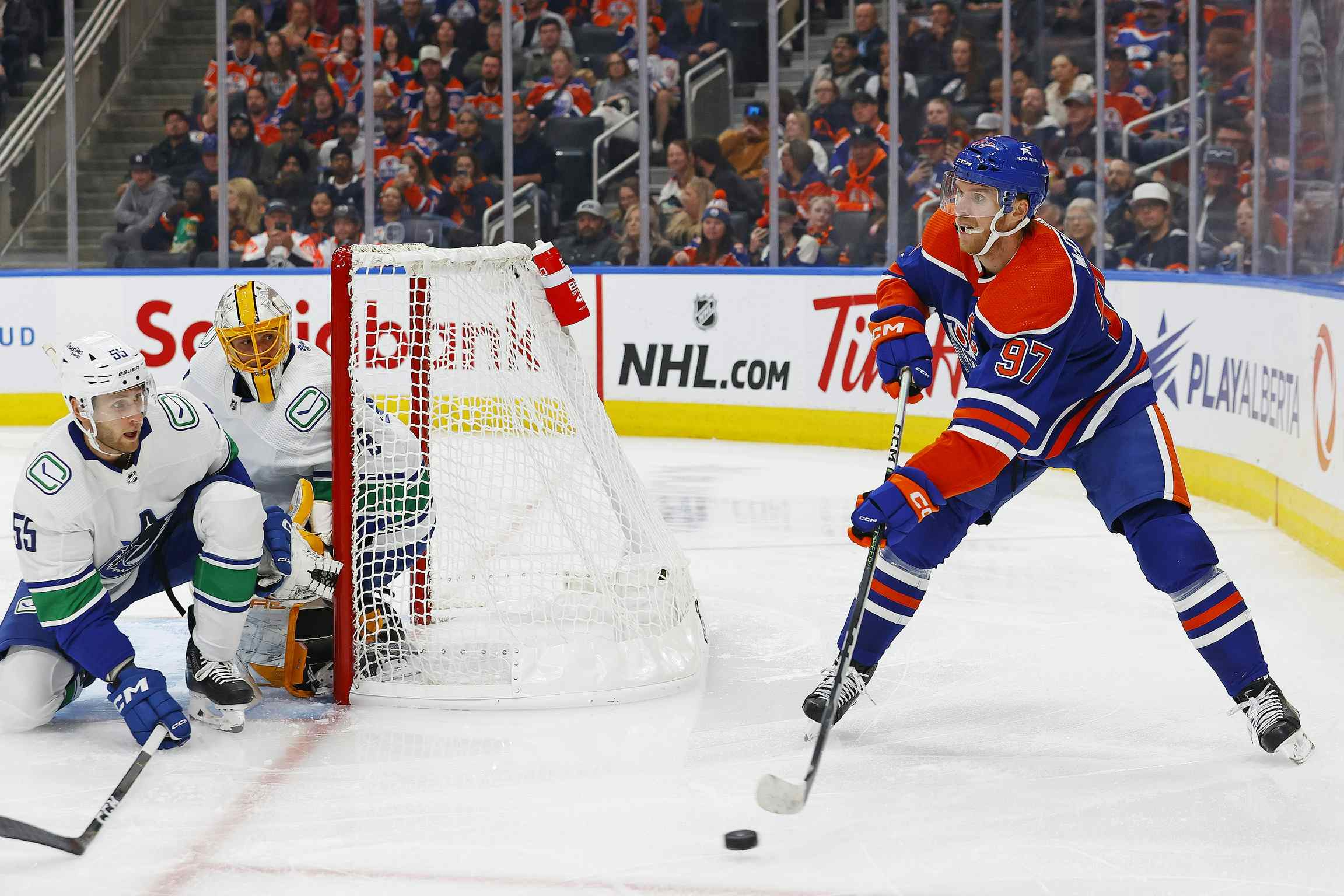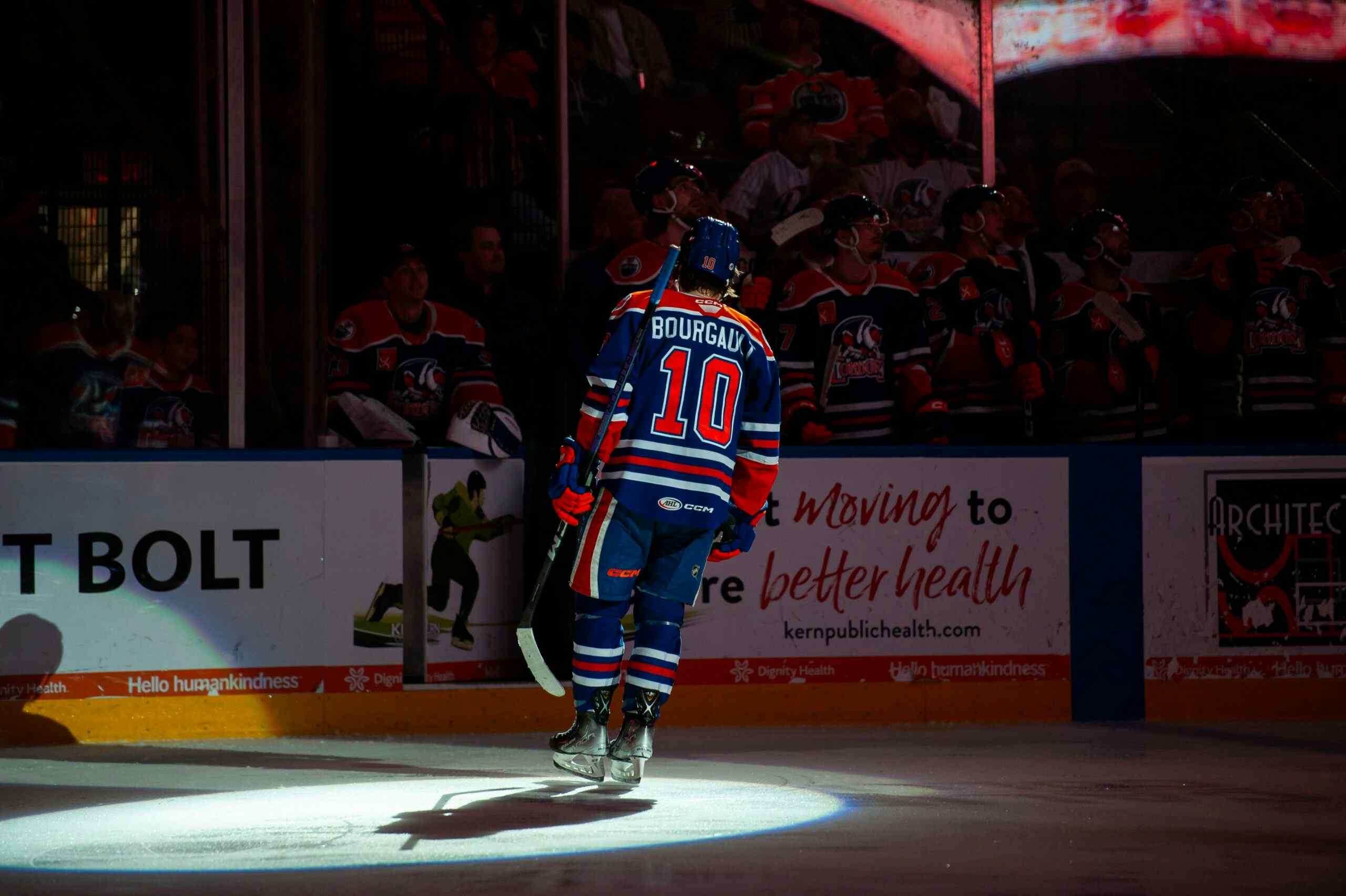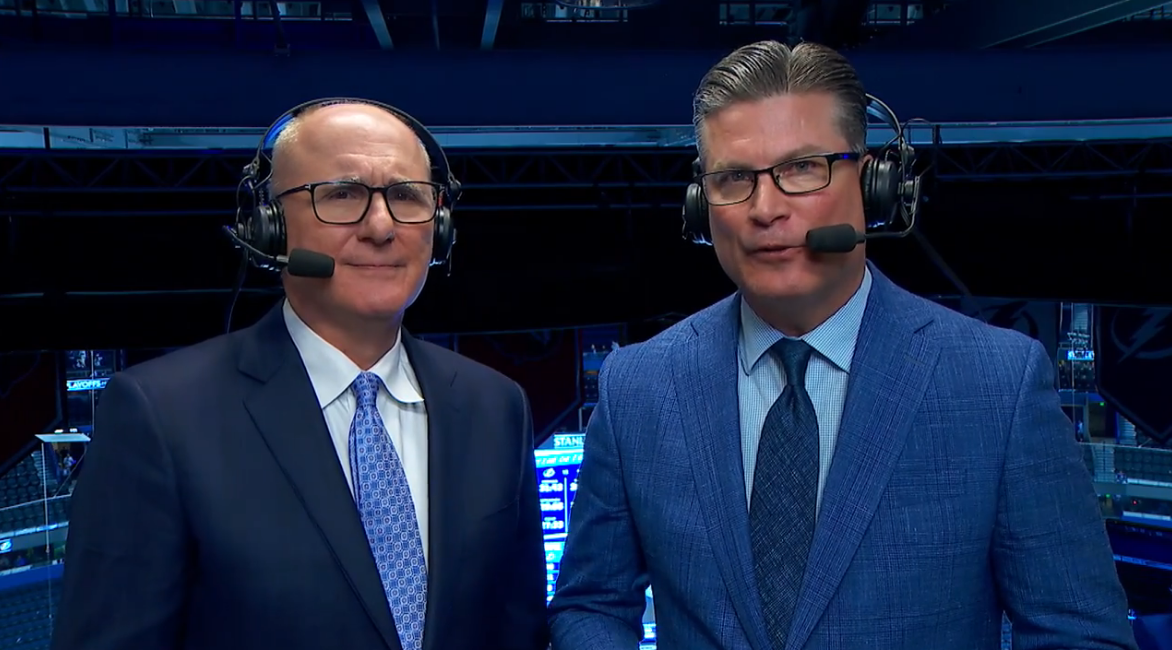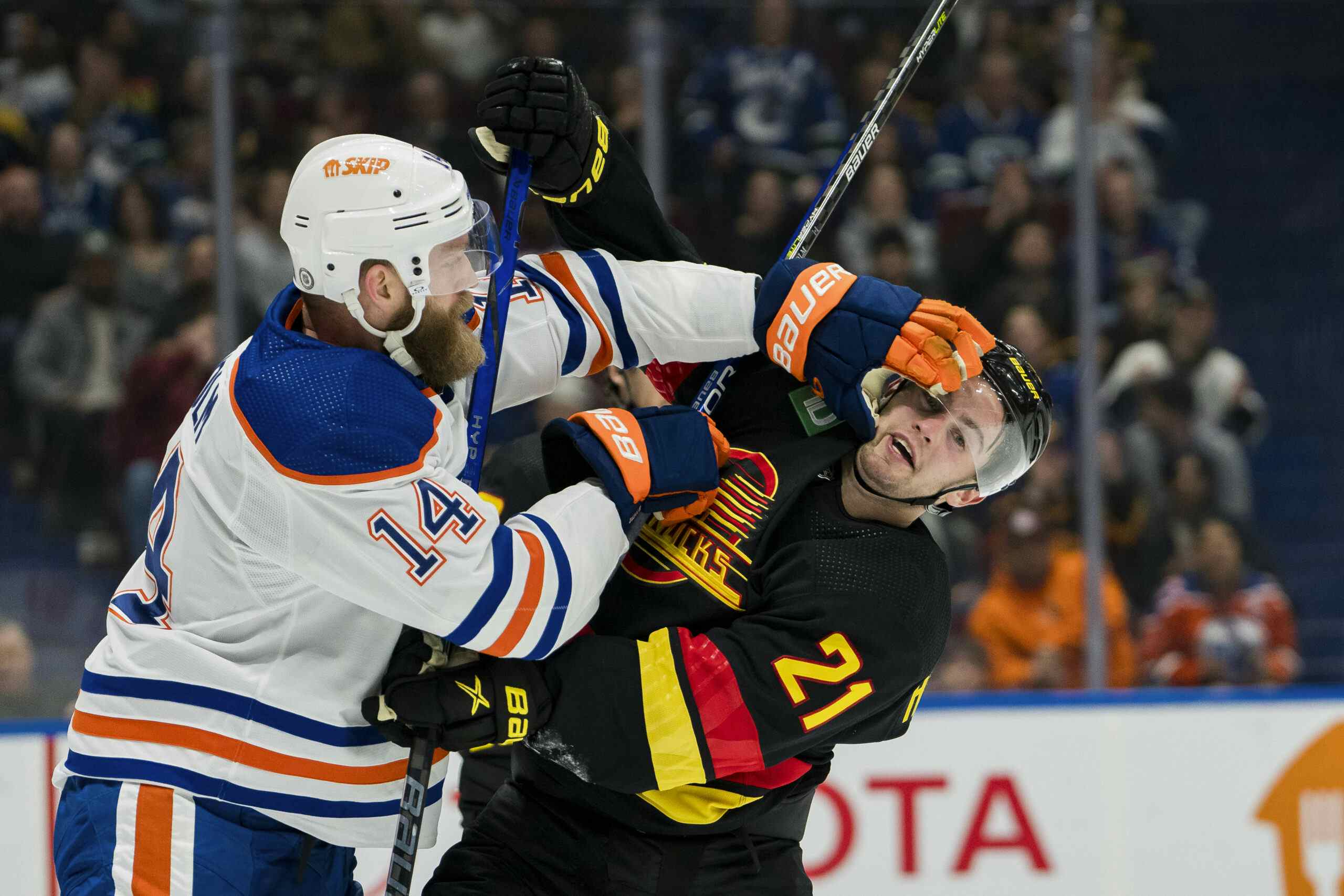Adam Pardy’s Audition

When Adam Pardy was claimed off waivers from the Edmonton Oilers at the trade deadline, it reflected more than a desire to add a warm body for the remainder of the year. Rather, the Oilers wanted to give the pending free agent an audition with an eye toward adding him to next season’s roster.
If there had been any doubt of that, Oilers coach Todd McLellan erased it with his comments on Tuesday.
Audition Time

Pardy took part in practice on Tuesday despite being “week-to-week” with injury, and McLellan was willing to explain why when asked about it:
Adam wants to play, badly. He’s got a hand injury from blocking a shot, and he’s able to skate so he wants to keep his legs going and his conditioning up as much as he can. The minute he’s good to play we’re going to put him in, because we’d like to find out a little bit more about him. He can’t run the risk of greater injury to himself and hurting the team, and I think he understands both of those situations. He’s very noble, he wants to maintain that conditioning level and we’d welcome him back quickly.
It makes sense that Pardy would want to play. He’s on his third consecutive one-year deal, with annual salaries of $600,000, $700,000 and finally $1.0 million this season. He’ll turn 32 later this month and he’s been healthy for only 20 games on the season; that combination of age and poor health is the kind of thing that can end careers, especially for a depth player in the NHL who was waived by his last team. He’s literally playing for his continued career right now.
McLellan’s comment about wanting to find out a little bit more about the player makes sense, too, and echoes what general manager Peter Chiarelli said shortly before Edmonton put in its claim.
“There may be a D here or there that we may acquire,” Chiarelli said then, “To test-drive, so to speak.”
Pardy’s audition had been going pretty well, but may now be over at six games. If that’s the case and Edmonton has to make a decision on him based on what it knows, does it make sense to sign him?
Pardy’s Past
Over the last five seasons, Pardy has been used solely as a third-pair defenceman. He’s averaged between 12:30 and 15:33 per game at even-strength, and evolved from a secondary role on the penalty kill in previous years into a mainstay over his time with Winnipeg. How did he perform?
We’ll start with his penalty-killing work, since its only really during his time with Winnipeg that he played enough to get a fair read. Of the seven Jets defencemen to play at least 100 minutes in 4-on-5 situations from 2013-15, nobody had better shots-against metrics than Pardy. He played a little over three hours, and on average the Jets allowed 61 Fenwick events against per hour, down from the team average of 67. It’s reasonable to believe that he’s an asset when his team is down a man.
At evens, it makes sense to look at individual years:
- 2011-12 (Dallas): Pardy played with an assortment of partners, and three of the four had better Corsi numbers with him than they did without him (the exception was Mark Fistric, and it doesn’t take much imagination to guess why pairing Pardy with a left-shooting stay-at-home defenceman wasn’t ideal). He played typical third-pair opposition without any zone-start shelter and had decent on-ice numbers.
- 2012-13 (Buffalo): Pardy played with Mark Pysyk, a young, right-shooting puckmover, and the pairing did rather well. He also played with Mike Weber, a physical, left-shooting stay-at-home defenceman, and the pairing did rather poorly. He got lots of defensive zone starts and played third-pair opposition.
- 2013-15 (Winnipeg): The same pattern played out in Winnipeg with multiple partners. For the most part, Pardy’s pairings did well (his 52.3 percent Fenwick rating was the second-best on the team over these seasons). He was extremely effective with right-shooting puck-movers; his weakest performances came with left-shooting stay-at-home types. The shot metrics probably exaggerate his effectiveness in that he got a significant amount of offensive zone starts.
We haven’t seen a big drop-off yet from Pardy, and in the right situation he looks like a player who can absolutely help in a depth role. He’s useful on the penalty kill, and at 6’4”, 227 pounds he scratches the size itch. More importantly, he’s a guy who can be part of a third pair which wins the territorial battle, and that’s not something which is always the case with this player-type.
Given that he’s likely to agree to a one-year deal at low money, Pardy looks like a fantastic fit for the No. 6/7 role next year and his performance over a half-dozen games with the Oilers only confirmed that. The only quibble here is with regard to precise fit on the blue line, as Edmonton may need to clear out some bodies and may prefer a right-shot defender in the No. 7 role given its surplus of left shooters.
RECENTLY BY JONATHAN WILLIS
Recent articles from Jonathan Willis

